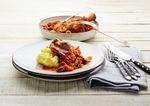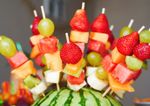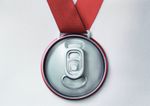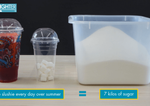How supermarkets are designed to make you spend more
by Emma Groves, Obesity Policy Senior Coordinator
- June 21, 2023
- Leave a comment

Most of us have the best intentions when food shopping - to fill our trolley with a variety of healthy, enjoyable food that our family will eat, without spending too much money.
Instead, thanks to the marketing three Ps – product, price and promotion – we routinely spend more than we expect and make unplanned purchases of highly processed, unhealthy foods. The fact is, supermarkets are designed to make you spend more and this is happening at the expense of our limited budgets and our intentions to eat .
Being aware of the common marketing tactics that supermarkets use will help you sidestep the tricks and boost your budget.
Location
From the moment you enter the supermarket to the time you pay you are being exposed to promotions for products that are rarely on your shopping list.
It’s not uncommon to find products such as sugary drinks or salty chips everywhere - at the end of aisles, at the check-outs, and in multiple other locations throughout the store. These displays are usually highly visible and colourful, appealing to children, and temptingly covered in “on special” signs.
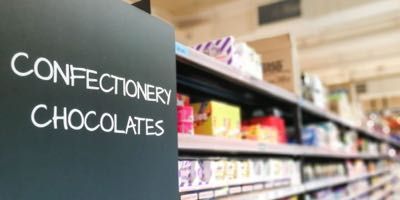
Shelf-space allocation is another way supermarkets maximise our exposure to unhealthy food and drinks. The major Australian retailers dedicate between 63-73 per cent of their regular shelf-space to unhealthy food and drinks and that doesn’t include the temporary locations such as island bins and promotional displays (end of aisles). What this looks like when we are shopping is whole aisles dedicated to unhealthy products and concerningly, this percentage is up to 10 per cent higher if you’re in a suburb where people live on lower incomes.
Product and price promotions

Did you know that each product category in a supermarket has its own sales and profit targets? Before you know it, you have ice-cream, sweet biscuits, sugary drinks, chips, ‘lunch box’ snacks all in the trolley. It's no accident. Supermarkets are designed so that each category has an appealing promotion to increase the chance shoppers will purchase from multiple categories and ultimately spend more.
Price promotions can be appealing and the more our budgets are stretched, the more alluring price promotions are. Be aware! Discounts (half-price, 30 per cent off) and multi-buy offers (2 for 1) make you buy more, and spend more (not save more!).
Research summarising the way that shoppers use temporary price promotions has found:
- Promotions result in shoppers spending more money than they had planned
- Shoppers eat and drink products purchased on promotion faster
- Promotions are more often on highly processed, unhealthy food and drinks
- Shoppers on tighter budgets spend a larger proportion of their total shop on items on promotion.
So, when budgets are stretched, being bombarded by promotions for highly processed and unhealthy items is actually making us spend more money and eat unhealthy products faster.
How supermarkets could help

Supermarkets can play their part in evening the playing field so we have a fair chance at purchasing a healthy, affordable trolley. We’d like to see a re-fitting of the three marketing Ps to shift and support our purchasing to healthy, affordable food for our families, rather than bottom line profit for supermarkets.
P. Presence
Make the healthy options prominent and easily accessible. Swap the highly-processed unhealthy foods at the check-outs and end of aisles to healthy items. In the UK, the Government has introduced restrictions where items high in fat, sugar and salt can’t be displayed in prominent locations such as checkouts.
This should also include a reallocation of shelf-space towards healthier items.
P. Price
Shift the balance of the price promotions to healthier items. Give people a chance to buy more of their staple groceries and healthy products on special. Imagine if there were more opportunities to buy foods like wholegrain cereals, pasta and rice, frozen vegies and tinned fruit on price promotion.
P. Packaging
Product packaging should allow us to easily find the information we need, such as the country of origin, ingredients list, preparation and storage instructions, and nutrition information.
We need food packaging to be consistent which will enable shoppers to make comparisons easily. This must include the Health Star Label on all food packaging and inclusion of added sugar on the nutrition information panel.
Read more about understanding food labels here.
So what can we do next time we are shopping?
While it’s great to access price discounts that may be available on our regular grocery items, how do we avoid over-spending on items we never intended on buying?
Have a list (and stick to it)
It’s been said before, but having a plan of what meals will be prepared and writing a shopping list helps to avoid unplanned purchases. Don’t forget to add nutritious snacks to the list!
Check out some great snack recipes here.
Take advantage of price promotions on your staple grocery items
Have a quick look through the catalogue online or before you enter the supermarket to give yourself some mental preparation of which promotions you want to target (half price toothpaste and canned tuna – yes please!) and which ones you’ll save for next time. Remember to take into account shelf-life. It’s not a saving if it goes off before you can use it!
Limit how much you buy of the less nutritious options on sale, and purchase them wisely
Remember the supermarket will have promotions in every product category, as it wants you to buy from every product category. You don’t have to!
Ask yourself:
- Would I buy it if it wasn’t on promotion? Have I already purchased something I wasn’t planning to because it was on special?
- Can it wait until next week? (as it or a very similar item will be on promotion each week).
Distract the kids to limit pester power
Some ideas from the LiveLighter team when shopping with children:
- Encourage them to eat the free fruit
- Ask them to hold the list and cross off items as you go
- Let them help choose the items on the list and count them as they go in the trolley
- Read out the recipe on the back of packaging
- Talk about what’s for dinner or lunch and how you are going to prepare the ingredients when you get home
- Use the confectionery-free checkout. If you can’t find it, ask a staff member where it is!
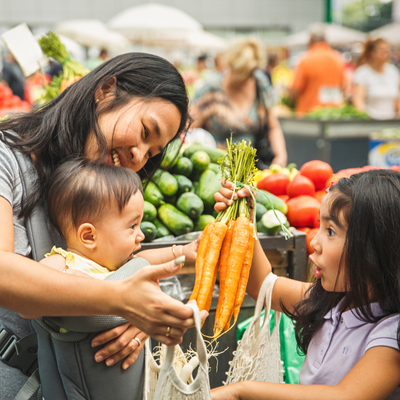
Supermarket profits shouldn’t come at the expense of our health or our budget. Being able to recognise and avoid marketing tactics supermarkets are using to maximise sales of high-profit, low-nutrition products is one important skill we can develop to help us eat well within our budgets.
